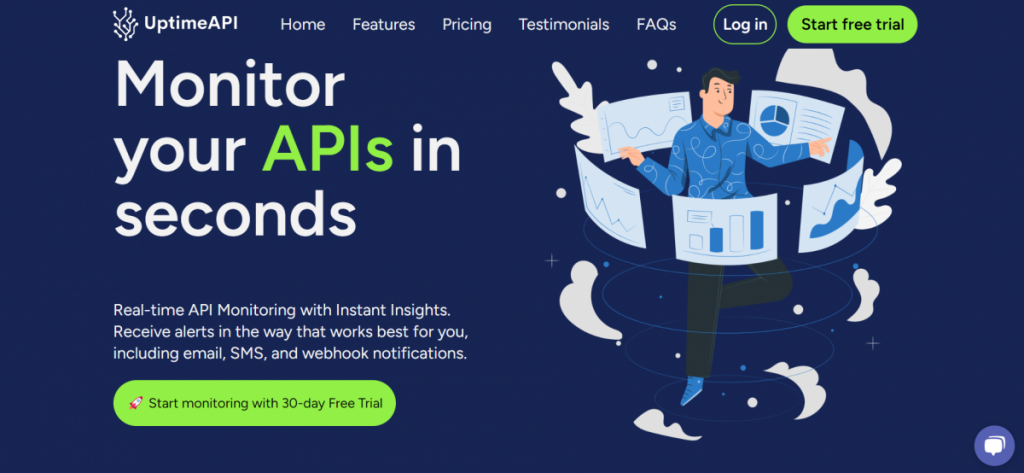In the ever-evolving landscape of software development, the demand for developer-friendly tools has never been higher. Developers are continually seeking solutions that enhance their efficiency, productivity, and the overall quality of their products. One such tool that has garnered attention in the developer community is UptimeAPI. In this article, we will delve into the world of The Most Dev Friendly Tool For Developers. We will explore its key features and elucidate how it stands as the epitome of developer-friendliness.
Key Features of UptimeAPI
Real-time Monitoring
First and foremost, Uptime API distinguishes itself with its real-time monitoring capabilities. In a fast-paced digital world, real-time information is paramount. Developers rely on real-time data to make crucial decisions and ensure their applications are running smoothly. It delivers this essential feature, allowing developers to stay ahead of potential issues and provide seamless user experiences.
For example, when a critical service experiences downtime, the tool promptly notifies developers. This immediate insight into downtime allows developers to take swift action, mitigating potential losses and safeguarding their users’ experience. Real-time monitoring not only saves time but also reinforces reliability.
Customizable Alerting System
Secondly, Uptime API shines with its customizable alerting system. Developers understand that not all issues are created equal, and not all incidents require the same level of attention. This is where UptimeAPI’s customizable alerts come into play.
Developers can tailor alerts to match their specific needs. Whether it’s a minor issue that can be addressed later or a critical outage demanding immediate attention, it allows developers to set alert thresholds accordingly. This flexibility ensures that developers are not bombarded with inconsequential alerts, allowing them to focus on what truly matters.
Developer Benefits and Use Cases
Improved Productivity
First of all, Uptime API significantly boosts developer productivity. By providing real-time monitoring and customizable alerts, it empowers developers to focus their efforts where they are needed most. Imagine a scenario where a developer receives an alert about a potential issue, but it turns out to be a minor glitch. Without UptimeAPI’s customization options, this could lead to unnecessary disruptions and wasted time.

Enhanced Reliability
Secondly, Uptime API significantly enhances the reliability of applications and services. In a digital world where downtime can result in substantial financial losses and damage to a company’s reputation, reliability is non-negotiable. Uptime API’s real-time monitoring ensures that developers are aware of any issues the moment they occur, minimizing the impact on end-users.
How To Use UptimeAPI?
You just have to register on the Uptime API website and start monitoring with a 30-day Free Trial. Then create a new “Monitor” and complete the required data: API’s name, URL, HTTP Method, Monitor Timeout, Monitor Interval, etc. Finally, the service will monitor your API by regularly checking the status to ensure they are up and running as expected.
Watch this video:
In conclusion, Uptime API is undeniably the most developer-friendly tool for developers in today’s fast-paced digital world. With its real-time monitoring, customizable alerting system, and comprehensive API integration, it empowers developers to be more productive, enhances the reliability of their applications, and supports scalability and growth. Visit the website for more information.
Read this post: Best Whatsapp Phone Number Verification API With Cheap Plans In 2024


